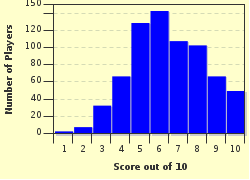Quiz Answer Key and Fun Facts
1. Understanding trauma is key to the day-to-day life of a paramedic. Kinematics is a branch of physics dealing with objects and motion. What are the key factors when trying to understand kinematics and predicting injuries in trauma?
2. It is the transmission of energy that causes damage to the tissues in blunt trauma.
3. Pericardial tamponade occurs when the chest cavity fills with blood.
4. Arteries are the blood vessels that carry oxygenated blood (except for the pulmonary artery,) away from the heart. Arteries have three very distinct layers of tissue that surround the lumen (the internal opening), one layer of which is very muscular and helps to maintain the diameter of these blood vessels. What is the name of this muscular layer of an artery?
5. It is possible for a victim of burns to become hypothermic.
6. Of the following choices, which is the type of joint that has the LEAST amount of movement?
7. Our eyes may be viewed by the romantics out there as the 'window to the soul', however for many of us, they are simply the organ that provides much of the input we use to interact with the rest of the world out there. Which of the following is the fluid that fills the posterior chamber (rear chamber) of the eye and helps the eye to hold its spherical shape?
8. A contrecoup head injury occurs directly below the part of the skull where the impact occurred.
9. When assessing and treating a patient who is exhibiting signs of behavioural disturbance, which of the following is the best approach?
10. Which of the following organs is located in the retroperitoneal cavity?
Source: Author
ecnalubma
This quiz was reviewed by FunTrivia editor
crisw before going online.
Any errors found in FunTrivia content are routinely corrected through our feedback system.

